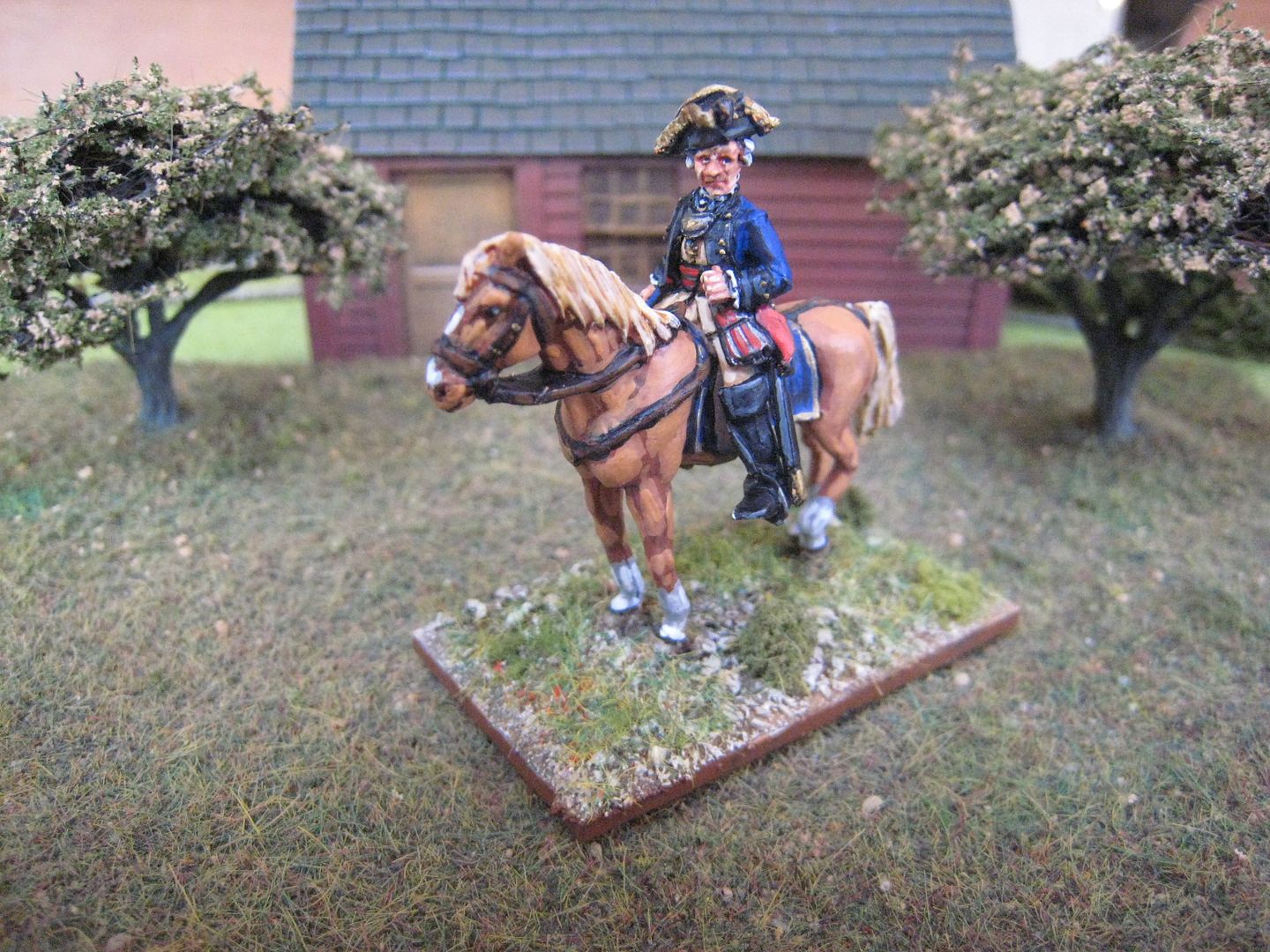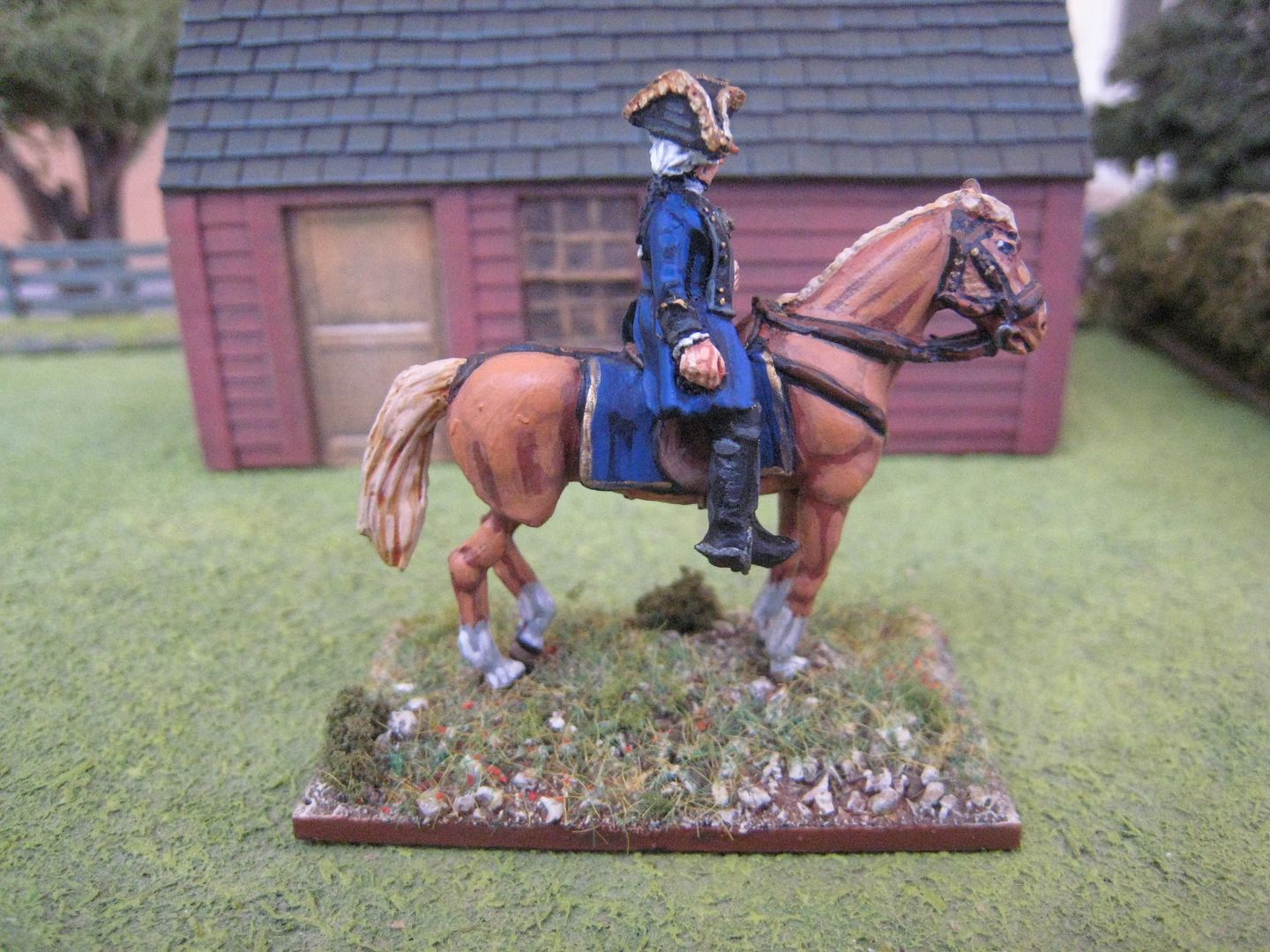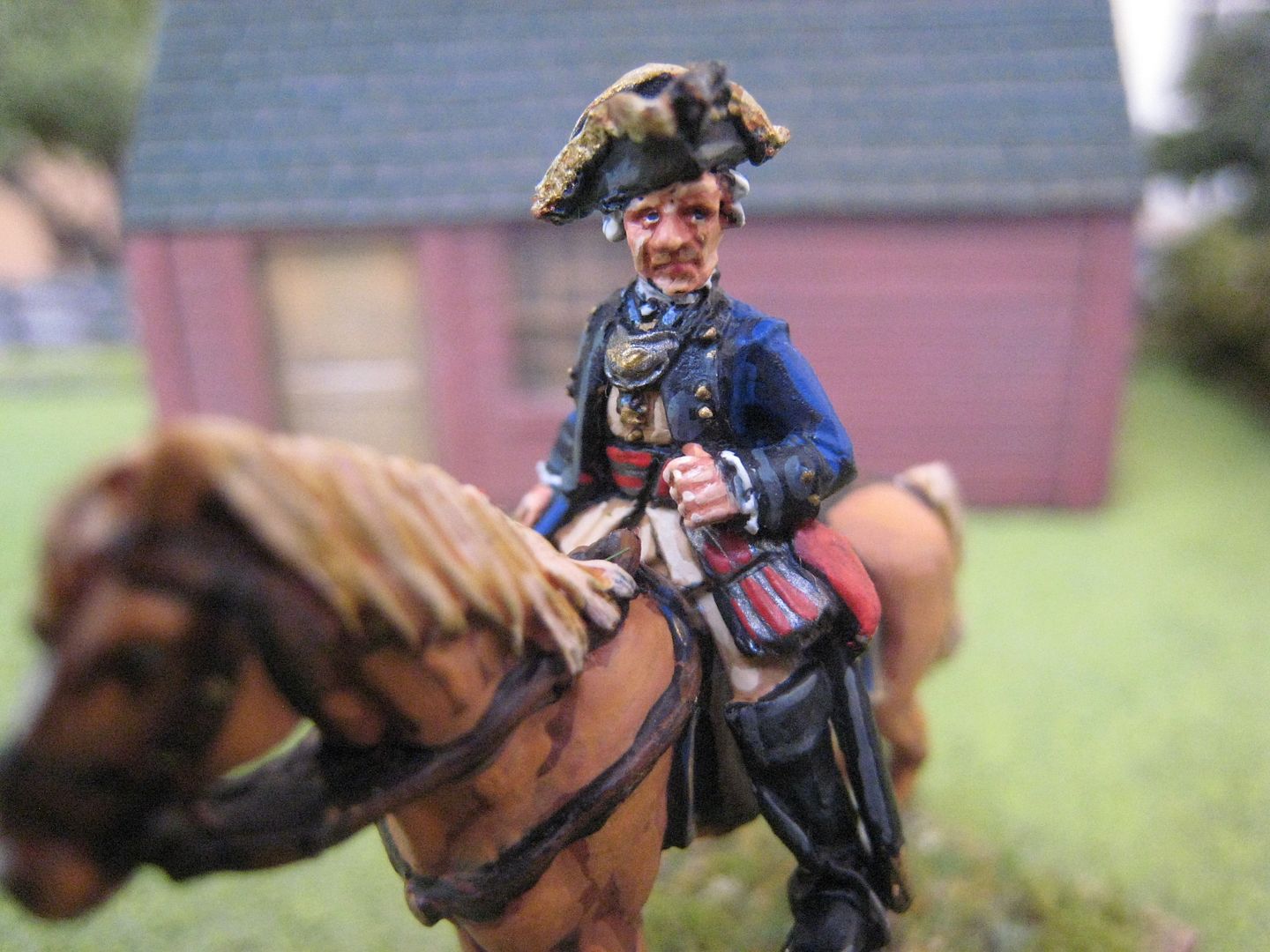Major Friedrich von Dechow was the commander of the von Knyphausen Regiment at the battle of Trenton. He had been wounded, twice, at the battle of Fort Washington in November 1776, but took command of the regiment because his superior, Colonel Borck, had an even worse wound and was convalescing in New York. Von Dechow was wounded again in the battle of Trenton, dying of his wounds a couple of days later. When he was unable to carry on during the battle von Dechow handed over command of his regiment to Captain Bernard von Biesenrodt and told him to surrender in other to prevent any further casualties. However, von Biesenrodt had other ideas and he and a handful of others attempted to flee from Trenton across Assunpink Creek. Some 50 soldiers from von Knyphausen's Regiment managed to escape. Before the battle, von Dechow had expressed concern about the Trenton garrison's exposed position. He suggested to Colonel Rall that defence works be built outside the town, but Rall (as noted earlier) insisted any attack would be met by the bayonet and didn't want his ability to deploy compromised by earthworks. Von Dechow also wrote (with the von Lossberg Regiment's commanding officer, Lieutenant-Colonel Scheffer) to von Heister on 17th December 1776 to warn of the state of the garrison, which was reduced by sickness, was tired and also suffering from the cold. None of this prevented the subsequent court martial enquiry from placing blame for the disaster on von Dechow (and, of course, Rall). It seems von Dechow was perceived as having been too slow to get his regiment into action and, despite being in a position to secure the bridge over the Assunpink Creek, which the garrison could have used for a retreat, failed to do so. One senses a brave, competent officer who, like Rall, found himself judged (posthumously) by his performance in his final, difficult battle.
The figure here is shown in the uniform of an officer of von Knyphausen's Regiment. It is a lovely sculpt - it looks as if the figure was modelled on the painting of Knyphausen himself in the Osprey MAA on German troops. This figure shows just how well Paul Hicks sculpts faces. Unfortunately the horse seems to be a bit of a mis-cast, as its right ear and part of it's back right leg are missing, and the right side of the head was lacking in definition. The next time I have some greenstuff out I'll try to add the missing ear. One nice touch of detail is that the figure is wearing the "Pour la vertu militaire" award just benath the gorget - hence the light blue ribbon near his neck.
1 figure. Painted September 2024.




6 comments:
Another beautifully done command figure Giles, and another interesting backstory. I always think those small casting imperfections seem more noticeable when you have been spending a couple of hours at close quarters painting the figure, but are rarely as obvious to the casual observer.
That's a smashing job you've done there Giles. Can't agree though on faces by Hicks, they all look like rats to me!
Very nice work, he looks rather splendid, wouldn't have noticed the horse miscasts if you hadn't pointed them out. Good read too, lots of information to be gleaned.
David, I can't wait to see what you say about my Old Glory Continentals!
Thanks, Lawrence - yes, I only noticed once I started painted it.
Thanks, Donnie. It's been really interesting looking up the lives of these Hessians. And as my next post will show, their families all seemed to inter-marry as well! I think the Hessians's reputation is much undeserved. The British seemed to have basically taken a "we don't trust Jonny Foreigner" view, which of course Trenton only made worse, whilst the Americans regarded them as vile mercenaries (I read somewhere, and need to re-find it, that there was a rumour that something akin to Hitler's Commando Order was issues in respect of Hessian troops). But then so many of them stayed in America or Canada after the war.
Post a Comment